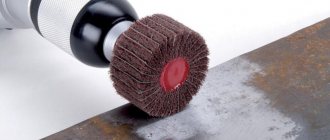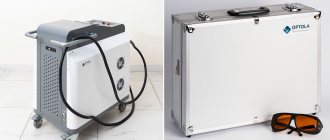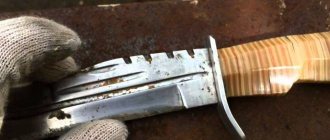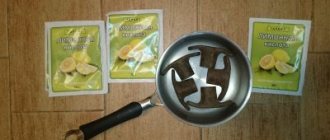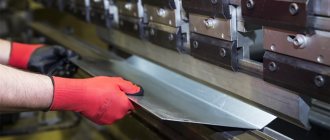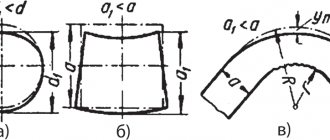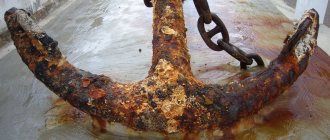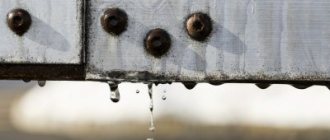The appearance of rust on metal surfaces and parts is a very common phenomenon that is often encountered not only by motorists. Corrosion is a chemical reaction that causes damage to metal. Cleaning rust from iron at home is one of the frequently asked questions that does not have a definite answer. In this material we will look at all possible ways to combat corrosion, and what tools, preparations and improvised means will be needed for this.
Rust on metal - causes of its occurrence
The first and very important question with which you need to start fighting corrosion involves finding out the cause of its occurrence. Having learned the reasons for the reaction, you can not only choose the optimal method for removing corrosion, but also prevent its reoccurrence.
Why does metal rust? The main reason for the reaction is the composition of the metal. It consists of various compounds such as oxygen, carbon, sulfur and others. It is these components that become the result of the appearance of rust stains on metal parts placed in water or a humid environment.
This is interesting! Pure metals do not rust, and these include gold, silver and platinum.
Metal in contact with air forms oxides, and with moisture - hydroxides. The effect of moisture and oxygen on metal contributes to its destruction, and the thinner the steel, the faster the process of its destruction occurs. This phenomenon is called corrosion, and the result of its occurrence is rust. It is almost impossible to avoid the occurrence of these processes, but various methods and techniques are used to reduce the rate of corrosion development.
Corrosion is a long-term process, so the destruction of metal products requires a long period of time, which directly depends on the thickness of the iron. It follows from this that the main reasons for the appearance of rust on metal are the following factors:
- Exposure of untreated metal to oxygen and moisture. In this case, the part does not necessarily have to be in a damp room. If you store a metal product in a dry and ventilated area, then signs of corrosion will also form after some time.
- Lack of special protective coatings - these include not only varnishes and paints, but also zinc coatings, which provide highly effective protection against the destructive effects of corrosion.
- Type of steel - high-alloy steels are susceptible to rusting with less intensity, which is due to the low percentage of carbon in the composition. However, such steels are quite expensive, so they are used for the manufacture of various high-precision parts or consumables for power tools.
Many people mistakenly believe that a type of steel such as stainless steel does not rust. We will not go into details of the composition of this material, but it is worth noting that even stainless steel is subject to the corrosion process. This is due, first of all, to the fact that the chrome film, which forms upon contact with oxygen, and thereby protects the metal from rust, is damaged, which ultimately leads to the appearance of rust.
To summarize, it should be noted that metal rusting is a normal natural phenomenon, which is a global problem for humans. And we are talking not only about problems with a rusting car body, but also about such global disasters as the sinking of ships, the destruction of bridges, etc., provoked by rusting metal.
Hydrochloric acid
It acts as quickly as nitrogen. The metal begins to turn white literally before our eyes. Since the reaction process produces hazardous gases, you should not get too close to the container in which the treatment is being carried out.
A slower, but also safest method of cleaning is to mix the acid with flour. Its addition will significantly reduce the rate of metal etching. However, it will take more time to remove the rust. You can also try adding methenamine, which is a corrosion inhibitor (suppressant), to the hodgepodge.
When processing any of the acids to neutralize its residues, the product must be washed in ammonia or a weak alkaline solution of soda or soap. Please note that after removing the oily film, the metal product can literally turn red again within half an hour. Therefore, after cleaning with an anti-rust agent, it must be immediately wiped dry or thoroughly calcined so that the water completely evaporates.
The part is then lubricated, coated with a layer of zinc or painted. If it is not possible to treat the metal with an anti-corrosion compound in the near future, it is coated with a spray bottle with a mixture of lithol (solidol) and gasoline.
Harm from rust or why you need to fight it
Everyone knows the danger of corrosion. In addition to the fact that the appearance of the metal part deteriorates, it also begins to lose its mechanical properties - strength, elasticity, rigidity, etc. Many people do not pay attention to the appearance of rust spots, which increase in size over time. The main danger of corrosion is that it corrodes the metal inside, making it ultimately unusable. As a result, you have to buy new parts, which causes additional costs.
The reasons for the need to combat rust are known. This must be done not only to protect the part from complete unsuitability, but also for aesthetic purposes. Moreover, the process of combating corrosion must be approached responsibly. An incorrect approach will only accelerate the rusting process, and in a short period of time it will fail.
Phosphoric acid
This method is perhaps the most common and safest. After all, phosphoric acid does not remove the oxide layer, but turns it into a film that can serve as an anti-corrosion coating. However, this method is only suitable for metal products that are only slightly affected by rust.
There is a special product on sale called “Anti-rust”. It is made precisely on the basis of orthophosphoric acid. True, such a solution acts a little slower.
If the plaque is large enough, it is better to use a combination of the first and second methods. First, treat the part with hydrochloric acid, and use phosphoric acid to only record the result.
Cleaning metal from rust - special preparations and mechanical methods
To combat metal corrosion, there are three main methods - the use of chemical compounds, mechanical and electrochemical effects (processing). It is simply impossible to answer unequivocally the question of what is the best way to remove rust from metal. To understand why, let's look at the features of each method.
- The chemical method of combating corrosion has its advantages and disadvantages. The products are available in the form of formulations of various consistencies - liquids, gels and even sprays. They contain substances such as acids that come into contact with materials and effectively remove traces of corrosion. However, such preparations can only be used on surfaces of acid-resistant metals. If the metal is not acid-resistant, then substances containing inhibitors should be used to clean it. They remove rust without destroying the structure of the product.
- Mechanical methods - there are a large number of them, as well as drugs to combat corrosion. If in the first case the removal of corrosion stains occurs automatically due to a chemical reaction, then the mechanical method involves physical action. The most common method is to use sandpaper or files.
- Electrochemical - the principle of their operation is based on passing an electric current through a calcium solution. In this case, a reaction begins to occur, through which oxide ions move from the iron to the clean electrode. The method for removing corrosion in this way is called electrolysis, which is used in industry and household activities.
The advantage of the chemical method of combating corrosion is that there is no need to apply physical effort. Anyone who has dealt with rust removal knows how difficult it is to clean the surface to a shine by hand. However, the chemical method has some disadvantages that you should be aware of before choosing and using them:
- when using chemical reagents, you can remove not only rust, but also speed up the process of metal corrosion, which is especially important for steel less than 3-4 mm thick;
- When using reagents, it is important to use protective equipment, since the acids and alkalis contained in the composition can cause a chemical burn if they come into contact with human skin.
Chemicals are very effective, but it is important to use them with extreme caution. This is especially true when removing corrosion from a car body, where the slightest inaccuracy can lead to corrosion of the paintwork.
The mechanical method of removing corrosion, despite its main disadvantage in the form of significant time consumption, is more relevant and in demand. The main reason for its popularity is safety and effectiveness. Next, consider all kinds of ways that will help get rid of corrosion that has arisen on a metal surface.
Electrolysis
Perhaps the most “confused” and even slightly dangerous event. However, it also shows good results. Therefore, if you want to feel like a scientist in a laboratory doing an experiment, then go for it.
First, prepare everything you need: a plastic bucket that holds the entire part to be cleaned, baking soda, an oblong piece of steel, and a battery charger. So let's get started.
- Fill the bucket with water so that the item is completely immersed, and add soda there at the rate of 1 tbsp. l. powder per 4 liters of liquid. Mix well.
- Place the sacrificial anode (that same oblong piece of steel) in the liquid. It should be half in the water and the other half above the water. This element will attract particles of flaking rust.
- Attach the negative battery clamp (it is black) to a non-rusted area of the object being cleaned. If the part is completely covered with a red coating, then scrape a small area down to the metal mechanically.
- Immerse the product in the bucket so that it does not touch the anode. This is extremely important! Otherwise, a short circuit may occur.
- Attach the clamp with the positive pole (red) to the part of the sacrificial anode protruding above the water.
- Turn on the battery and wait 12–20 hours.
- After this time, turn off the device and disconnect the wires.
- Take out an already clean object and, if necessary, wash off any remaining rust with a brush. Rinse and wipe dry.
Chemicals and traditional methods for effectively combating rust
Corrosion problems have been known for a very long time, and if now there are many different chemicals that can quickly and effectively remove rust stains, then previously improvised means were used instead. We will consider methods for removing corrosion using chemicals in more detail below.
Acetic acid is a cheap and effective drug
To quickly and cost-effectively remove rust from metal, you need to use 70% acetic acid or essence. You can also use regular vinegar. Fill the container with acid and place the part in it. After 2-3 hours, the workpiece can be removed from the container and the effectiveness of this drug can be verified.
Acetic acid can also be poured into a spray bottle, and thus treat a large surface. It is important to use safety glasses to prevent the drug from getting into your eyes. There is no need to talk about vinegar being 100% effective, but it all depends on the layer of rust on the part. After using this method, the workpiece should be thoroughly dried, and only then begin to apply additional protective agents.
Baking soda will help remove small pockets of corrosion on the metal surface.
Another product that is available in the kitchen is soda. It helps remove rust stains on metal surfaces. The principle of the procedure is to perform the following actions:
- Prepare a mixture by diluting soda with water and stirring thoroughly to obtain a porridge-like substance.
- Apply the resulting mixture to the area of rust formation and rub thoroughly using an unsuitable toothbrush.
- Wait a few hours, then rinse the surface thoroughly.
The procedure can be repeated several times to achieve an effective result. You can use soda not only to clean rust from kitchen utensils, but also from various parts.
Citric acid - removing rust in hard-to-reach places
Many have faced the need to remove metal corrosion in hard-to-reach places. If the outer surface can be sanded with sandpaper, then it is almost impossible to get into the internal cavities. In this case, a kitchen preparation such as citric acid will help.
In addition to effectively combating corrosion, citric acid is harmless to the skin of the hands, but in any case, it is recommended to use special gloves. The effectiveness of rust removal depends on the concentration of citric acid. It is recommended to dilute the powder with warm water in a proportion of 80 grams of acid per 100 ml of liquid. Next, the part is placed in a container with the solution for several hours, and after that it is removed.
Oxalic acid is a special preparation for fighting rust
Oxalic acid must be handled with care and with the obligatory use of protective equipment. The work algorithm involves performing the following actions:
- Pre-wash the part and dry it.
- Prepare a solution by dissolving six teaspoons of powder in 300 ml of water.
- Immerse the object in acid and remove it after half an hour.
- Remains of rust are removed with a toothbrush.
Acid copes not only with metal corrosion, but also with various surface contaminants.
Hydrochloric acid is a quick way to combat corrosion
To clean the surface of a metal product from rust, it is enough to treat it with a 2 percent solution of hydrochloric acid. When using this product, it is also important to follow safety precautions and use protective equipment.
Rust destroyers
You've probably come across drugs called rust destroyers or rust cleaners in hardware stores. They are liquid consistencies based on various acids that come into contact with metals.
The products are quite effective drugs, but they must be used carefully. They are not only dangerous to humans, but also to the hardware itself. Excessive amounts of acid will not only remove the corrosion, but also damage the metal.
In addition to destroyers, there are drugs such as converters. Their main difference from exterminators is that after treatment with such materials, the surface does not need further treatment with primer compounds. After the converter has dried, you can begin painting the surface.
Hydrogen peroxide - how effective is the drug?
If you need to remove rust from a bathtub, toilet bowl or cutlery, then you can use harmless hydrogen peroxide. The drug itself is not so effective, so it is recommended to use it together with trisodium phosphate. To prepare the product, you must perform the following steps:
- Dilute trisodium phosphate powder in 3 liters of water.
- Add 50 ml of hydrogen peroxide.
- Use the product to wet or wipe surfaces with traces of corrosion.
A popular drink such as Coca-Cola is also used to remove rust. This delicacy has this property due to the fact that it contains phosphoric acid. The process of removing corrosion with Coca-Cola takes a very long time (at least 20 hours), but the result cannot be pleasing to the eye.
This is interesting! In small quantities, the Coca-Cola drink is harmless to the body, but if it is consumed in large doses and constantly, one can imagine its negative impact on human organs.
An alternative to sandpaper is foil, which can be used to clean and remove minor rust on the metal surface. The methods listed above to combat corrosion are considered the best available means. However, to remove rust from important parts, you will need to use more significant methods.
Economic effect
Rust causes degradation of products and structures made from iron-based materials. Since rust has a much larger volume than the original iron, its buildup leads to rapid destruction of the structure, increasing corrosion in adjacent areas - a phenomenon called rust eating
. This phenomenon caused the destruction of the Mianus River Bridge (Connecticut, USA) in 1983, when the bearings of the lifting mechanism completely rusted from the inside. As a result, this mechanism caught the corner of one of the road slabs and moved it from the supports. Rust was also a major cause of the collapse of the Silver Bridge in West Virginia in 1967, when the steel suspension bridge collapsed in less than a minute. 46 drivers and passengers who were on the bridge at the time were killed.
Kinzu Bridge after destruction.
The Kinzu Bridge in Pennsylvania was torn down by a tornado in 2003, in large part because the central support bolts connecting the structure to the ground had rusted, leaving the bridge supported only by gravity.
In addition, corrosion of concrete-coated steel and iron can cause the concrete to split, creating serious design difficulties. This is one of the most common failures of reinforced concrete bridges.
Mechanical methods of combating metal corrosion
How to remove rust from metal? The easiest way is to use sandpaper or a metal brush. The disadvantages of this method are known to everyone - the expenditure of effort and time, but even with these disadvantages, the method continues to remain relevant, and moreover, it is very popular.
To remove rust from metal surfaces mechanically, the following tools, consumables and devices are used:
- Hand brush for metal - the tool is a regular brush with a handle, but instead of the usual bristles it uses metal bristles. The wire-shaped bristles have varying stiffness, thereby ensuring their penetration into the smallest pores on the surface of the iron. Brushes are used to remove rust only in cases where there is a large layer of corrosion and dirt on the surface of the part. However, we can’t talk about 100% efficiency, since the brush removes only superficial deposits and is not able to clean out the orange deposits from the pores.
- Mechanical brushes (cord brushes) - the effectiveness of removing rusty deposits on the metal surface depends on the speed and frequency of passage of the bristles through the metal. Especially for such cases, special attachments for power tools have been developed - mechanical brushes for metal. The products are available in different shapes, types and configurations, which allows you to use the best option for cleaning various surfaces. The brushes are suitable for electric drills and angle grinders. Despite the simplicity of the design of the nozzles, it is quite difficult to work with them due to centrifugal force. When the nozzle touches the surface being treated, the tool tends to escape from your hands, so it is very important to hold it with both hands. When working, you need to use protective equipment, which is due to the formation of large amounts of metal dust. In addition, the separation of lint cannot be ruled out, which, at high rotation speeds of the nozzle, can get stuck in the skin. To eliminate such consequences, it is recommended to carry out work in special clothing. The bristles on the brushes can be coated with a layer of brass. This is done so that during the cleaning process a protective brass film is created on the treated area.
- Sandpaper – You can remove rust using sandpaper. This is one of the most effective means, the main advantage of which is the ability to select fractions of suitable size. Sandpaper should be selected depending on the size of the pores present on the workpiece. The disadvantage of using sandpaper is that the process is complicated and time-consuming.
- Power Tools for Sandpaper - To remove corrosion from metal using sandpaper, it is recommended to use power tools. These include drills, grinders and grinders. Special round attachments are designed for fastening in the chuck of a drill (screwdriver) or the spindle of an angle grinder. Sanding sheets are used on sanding machines. The downside to using power tools with sandpaper is that you have limited access to tight spots. And therefore, especially for such cases, a type of tool such as a sandblasting gun was invented.
- Sandblasting gun or sandblasting equipment - the products have a simple design, but their main advantage is the high quality of rust removal. The operating principle of the equipment is based on cleaning the surface using grains of sand. Sand flies out of the nozzle of a special nozzle, called a gun, under the influence of compressed air pressure. Due to the high air pressure, the speed at which grains of sand fly out increases, which, when they hit the surface, clean the rust. Today, sandblasting equipment is the most effective means for high-quality cleaning of metal surfaces from rust.
Knowing what mechanical methods exist to remove corrosion from metal, it will not be difficult to choose the appropriate option or try all methods. It is important to note that when using sandblasting equipment it is important to consider the following:
- The devices have high power, so it is not recommended to use them for processing thin sheet metal.
- Sandblasting machines can easily cope not only with rust, but also with cleaning the surface of dirt and paintwork.
- The efficiency of the equipment depends on the type of sand used - river, quartz, corundum, etc.
Moreover, it is important to understand that the installations effectively remove rust not only in open areas, but also in hard-to-reach places. To reliably and effectively combat rust formed on metal, it is recommended to give preference to sandblasting machines.
Prevention measures
The following preventive recommendations will help prevent the formation of rust:
- Avoid contact of moisture with instruments. It is better to store them in isolation, trying to wrap them in paper or cloth;
- if the element is used very rarely, it is worth treating it with a converter before storing it;
- metal panels and other products stored outdoors must be painted. A simple coating will reduce the risk of red spots if updated regularly;
- if rust appears on a car, the problem areas must be treated with a primer, converter, and then painted;
- metal should be regularly checked for corrosion. If a problem occurs, simply apply an anti-corrosion agent or a similar product to the rust.
There are many methods to stop metal corrosion and remove rust stains. You need to choose the optimal one depending on the type of coating. To achieve a good result, you should follow the recommendations for the duration of contact of the active substance with the instruments. Aggressive acids can ruin them, because with prolonged interaction they corrode not only the layers, but also the metal itself.
Electrochemical method of rust removal using the example of a car body
Particular attention should be paid to such a method of combating corrosion as the electrochemical method. It is immediately worth noting that this method is suitable for combating corrosion on any type of metal surfaces, including car bodies.
The essence of this method is based on provoking electrochemical corrosion. Metal conducts electric current, and depending on its magnitude and voltage potential, atoms are aligned in a certain chemical series.
The electrochemical corrosion removal method is also called cathodic protection. Why protection? This method allows not only to remove corrosion, but also to apply a protective zinc film to the metal. All this can be done at home. And if the method of removing corrosion using sandblasting equipment does not suit you, then we will consider in detail how you can eliminate corrosion on a car body using the electrolytic method.
Initially, you need to prepare the necessary tools and materials. For this you will need:
- DC source. You can use a car battery, but it is recommended to use a charger with current and voltage indicators, as well as a step regulator.
- A container made of material that does not conduct current. This is in case you plan to process the removed part.
- Aqueous solution - it is recommended to use baking soda or soda ash as the medium in which the reaction will occur. An alternative is a pipe cleaner called "Mole". It contains sodium.
- The positive electrode acts as an anode. It is recommended to use stainless steel material as an electrode. The metal used must be a conductor of current, but only with less conductivity than the metal being processed.
- To ensure the procedure is carried out correctly, you will need one more important detail - a fabric insert on the anode. It not only eliminates the occurrence of a short circuit, but also allows you to apply an aqueous solution to the area that needs to remove corrosion.
As you can see, every home craftsman has all the necessary materials and tools in his arsenal. After preparing the necessary tools, we move on to creating a tool for electrolytic cleaning of metal from corrosion.
- Initially, it is necessary to attach an electrode to the positive contact (terminal) from the charger or car battery. As an alternative, we use a stainless steel spoon.
- Next, a woven material must be wound around the electrode attached to the positive terminal. You can use a sponge or any cloth. The reaction speed depends on the thickness of the fabric, and the thicker it is, the slower the anodizing process.
- The tool for removing rust from a car body is almost ready for use. All that remains is to secure the negative terminal from the charger to the car body. If a battery is used, then the “ground” is already on the car, and you can begin to manipulate it.
- Prepare an aqueous solution using the “Mole” product. To speed up the process, you can add soda ash or sodium to the solution. If you use regular soda, then 1 tablespoon per 1 liter of water is enough.
- By wetting the anode sponge, we treat the area on the car body with signs of corrosion. It is very important to pre-clean this area of contamination. The saffron caps should also be cleaned of paintwork to ensure that corrosion in these areas is removed.
- Before starting the procedure, connect the charger to the network and set the current. The current strength depends on the size of the part, so we proceed as follows. If saffron milk caps are removed, as shown in the photo above, then we set the current to 6-8 Amperes. It will be quite enough. If you need to clean a large part from corrosion, for example, a car wheel, then you will need a larger current, 10-15A. However, it is important not to overdo it here, since this way you can burn the memory.
- Let's get down to business - wet the woven part of the anode in the solution, and clean the area on the car with signs of corrosion. In just a few minutes you can see how the rust begins to dissolve.
- After thorough treatment, it is necessary to rinse the treated area with distilled water. Using plain water with a salt solution will worsen the situation.
- After cleaning the rust on the car body, you can proceed to the next stage - protecting it with galvanizing and painting.
To galvanize a car body at home, a similar tool is used. The only difference is that instead of a stainless electrode it is necessary to use a zinc plate. In order for zinc ions to transfer to the metal and create a protective film, it is necessary to treat the fabric in which the anode is wrapped with soldering acid.
Naturally, the method of electrochemical removal of corrosion from metal is suitable for untreated cases (for example, a car body). The thickness of a car body is 2-3 mm, and if the metal is completely rotten, then there is no point in trying to clean it or save it in any way. In this case, you will need to replace the failed body part. In order not to have to change part of the car body, it is recommended that when the first saffron milk caps are detected, resort to rust removal.
This is interesting! It is important to understand that although saffron milk caps appear on cars on the outside, the reason for their occurrence is hidden inside. In this case, after removing the saffron cap on the outer part, do not forget to check the inside of the part. There is a high probability that the corrosion stain will be more significant on the inside than on the outside.
You don't have to be a chemist to clean rust from metal using the electrochemical method. The procedure is extremely simple and understandable, however, when implementing it, it is important to follow safety precautions and use personal protective equipment (PPE). Below is a video that describes in detail the process of how to remove rust on a car body quickly, efficiently and efficiently.
Selection rules
If the buyer wants to save money, then he should opt for neutralizers from a domestic manufacturer. Since the factories are located in Russia, companies are able to reduce prices by saving on transportation costs.
For non-professionals, it is better to purchase aerosol formulations , as they are more convenient to use. With their help you can quickly process a small surface.
If you need to clean a large area of rust, then it is more rational to purchase a liquid product. They are convenient for processing removable parts.
The choice should be made in favor of the gel when the treatment area is impressive , but it is impossible to remove the part. Such compositions do not spread over the surface.
Laser cleaning of metal from corrosion
In addition to the methods described above, there is another method of combating metal corrosion. It involves the use of laser equipment. This is a modern technology that is characterized by high speed, quality and efficiency. It has only one drawback - its high cost, so not everyone can afford to use it. Due to the high cost of the method, it is used to clean precious metals from corrosion and plaque.
The advantages of this method include the following factors:
- no release of harmful substances;
- automatic shutdown of the laser beam;
- ability to work with combined materials;
- high speed and quality;
- no need to replace consumables.
The cleaning procedure involves applying laser radiation to areas that need to be cleaned from corrosion. The laser beam acts exclusively on contaminated surfaces. The beam is reflected from clean areas, and damaged areas are heated, thereby removing plaque from them.
During laser exposure, heating causes a transformation of the structure, which ultimately causes plaque exfoliation. As the power of the equipment increases, the process of plaque evaporation occurs. The equipment is capable of heating workpieces to a temperature of 16.5 thousand degrees Celsius. The cleaning process is performed automatically. Initially, the working surface is scanned, and then the focused beam processes the part.
This is interesting! The use of such equipment for home use is irrational due to its high cost.
Heat treatment
Heat breaks down rust and is easy to remove with regular cleaning. Therefore, to combat the scourge, you can use the following tricks:
- if possible, pour boiling water over the object, wait for some time (until it cools down a little) and remove the loose layer;
- You can heat the device over a gas burner, gradually removing the easily removable deposit. To make the process faster, first apply hydrogen peroxide to the part;
- For those who have a steamer or steam mop at home, it's even easier: treat the rusty area with an intense stream of steam and scrub.
Preventive actions
To protect iron from rust, various alloys are used. These include chromium, molybdenum, nickel, sulfur, etc. The disadvantage of these methods is their high cost. A cheaper and more practical means of protecting steel is to coat it with various materials that create a barrier between the surface of the product and the environment. As such coatings, not only varnishes and paints are used, but also coatings made of zinc, chromium, tin, copper and nickel.
Using zinc as a protective layer is not only the most common, but also an effective method. The corrosion process of zinc occurs very slowly, and if applied correctly, the metal part will last at least 20-30 years. If a part has become rusty, its service life can be extended with timely treatment.
To summarize the above, it should be noted that metal corrosion is a normal phenomenon for nature, but abnormal for humans. A person cannot exclude the development of such processes, but it is quite possible to stop them if they choose the right method for removing rust.
Pros and cons of a homemade product
The anti-rust product, made by yourself, has a number of advantages. However, it cannot completely replace professional converters. Due to the existing disadvantages, many users prefer ready-made store-bought chemicals. For an objective assessment, it is necessary to consider both the pros and cons.
Homemade composition is valued for the fact that it:
It is not toxic to humans, as it consists of harmless substances.- Does not require very complex and time-consuming manufacturing technology.
- Has simple and clear instructions for use.
- Helps achieve rust removal and coating protection.
- It is much cheaper than branded analogues.
The disadvantages of a homemade converter make its use limited and reduce its popularity among motorists, housewives and production workers.
The weak points of the homemade corrosion modifier are:
- The need to find a convenient container and method of application.
- Can only be used with a thin layer of rust.
- Lower efficiency compared to special means.
- The need for mandatory coating of the product with paint or varnish.



